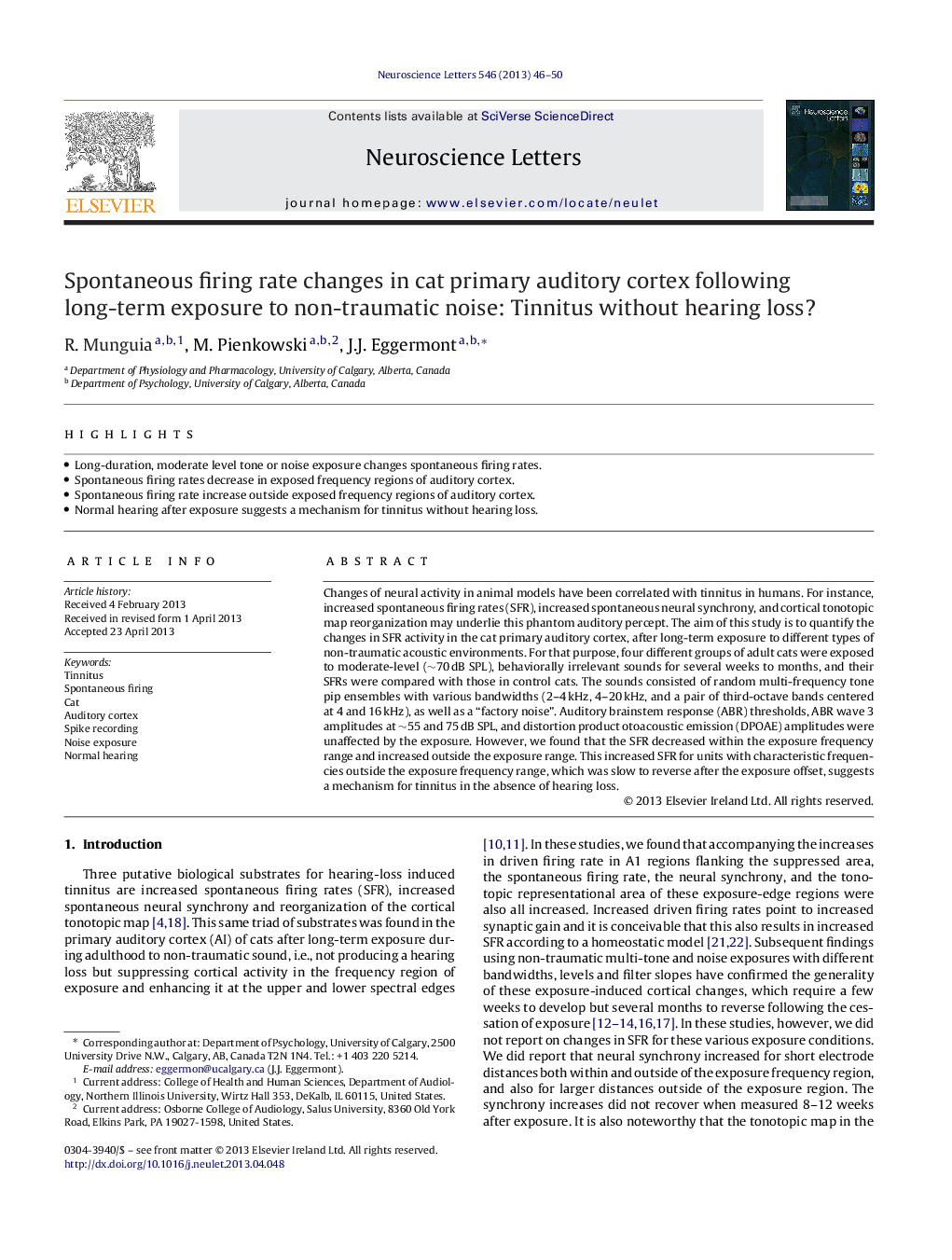| Article ID | Journal | Published Year | Pages | File Type |
|---|---|---|---|---|
| 6283301 | Neuroscience Letters | 2013 | 5 Pages |
Abstract
Changes of neural activity in animal models have been correlated with tinnitus in humans. For instance, increased spontaneous firing rates (SFR), increased spontaneous neural synchrony, and cortical tonotopic map reorganization may underlie this phantom auditory percept. The aim of this study is to quantify the changes in SFR activity in the cat primary auditory cortex, after long-term exposure to different types of non-traumatic acoustic environments. For that purpose, four different groups of adult cats were exposed to moderate-level (~70Â dB SPL), behaviorally irrelevant sounds for several weeks to months, and their SFRs were compared with those in control cats. The sounds consisted of random multi-frequency tone pip ensembles with various bandwidths (2-4Â kHz, 4-20Â kHz, and a pair of third-octave bands centered at 4 and 16Â kHz), as well as a “factory noise”. Auditory brainstem response (ABR) thresholds, ABR wave 3 amplitudes at ~55 and 75Â dB SPL, and distortion product otoacoustic emission (DPOAE) amplitudes were unaffected by the exposure. However, we found that the SFR decreased within the exposure frequency range and increased outside the exposure range. This increased SFR for units with characteristic frequencies outside the exposure frequency range, which was slow to reverse after the exposure offset, suggests a mechanism for tinnitus in the absence of hearing loss.
Related Topics
Life Sciences
Neuroscience
Neuroscience (General)
Authors
R. Munguia, M. Pienkowski, J.J. Eggermont,
